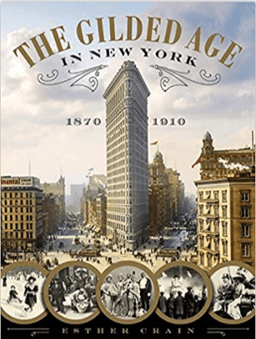
Gilded Age 21
Quiz by Deborah Gonzales
Feel free to use or edit a copy
includes Teacher and Student dashboards
Measure skillsfrom any curriculum
Tag the questions with any skills you have. Your dashboard will track each student's mastery of each skill.
- edit the questions
- save a copy for later
- start a class game
- automatically assign follow-up activities based on students’ scores
- assign as homework
- share a link with colleagues
- print as a bubble sheet
- Q1
What was the main reason for the rapid settlement of the Great Plains during the Gilded Age
Congress passed a law allowing people to claim public land and convert it toprivate property through the Homesteading Act.
Speculators bought large parcels of land and then built factory towns to attractnew immigrants.
Congress passed a law requiring all public lands to be sold at auction.
Native Americans sold most of their tribal lands directly to railroad companies.
60s - Q2
In what way did the Bessemer process affect economic change in the late 1800s?
It advanced rubber manufacturing.
It contributed to the development of the telegraph.
It facilitated the use of electricity.
It promoted the mass production of steel.
60s - Q3
By 1900, at least 40% of Americans lived in urban areas, with New York City and Chicago having populations of over one million. This increased urbanization largely resulted in —
cities that were overcrowded, congested, and polluted
demands for an end to the power of the political machines
passage of legislation limiting immigration to urban areas
philanthropists establishing foundations to help the poor
60s - Q4
Which of the following most accounts for the change in rural and urban populations during the Gilded Age?
City lifestyles attracted younger generations to migrate to cities.
Industry and immigration contributed to a steady growth of cities.
Railroad construction created jobs contributing to growth in rural areas
Passage of the Homestead Act drew Americans to rural areas.
60s - Q5
Civil Service reform during the Gilded Age was a response to —
demands from labor leaders that hiring practices needed to change
protests from Congressional leaders to regulate state governments
the growth of political machines and corruption of the “spoils system"
the problems brought about by rapid industrialization and urbanization
60s - Q6
Which word best explains the changes from Americans Indians changing from traditional dress to western dress?
Nullification
Nativism
Immigration
Assimilation
60s - Q7
The process of the Homestead Act led to —
peaceful resolution of territorial disputes with American Indians
G the establishment of agricultural communities on the American frontier
a decline in immigration to urban areas
federal regulation of agriculture
60s - Q8
Nineteenth-century nativist organizations advocated —
conserving natural resources through the creation of national parks
limiting federal military power through the organization of local militias
promoting an ethnically homogeneous society through restrictions onimmigration
globalizing the economy through participation in free-trade agreements
60s - Q9
Which benefit resulted from the introduction of the Bessemer steel process?
Electric lightbulb
Transistors for radios
Stronger and cheaper material for railroads and bridges
Mechanical reapers to replace horse-drawn reapers
60s - Q10
How did the invention the light bulb affect industry?
Businesses needed to hire skilled workers.
Products could be manufactured on an assembly line.
Machines needed to be repaired less frequently.
Factories could extend working hours.
60s - Q11
How have the shift from farming to factories affected the physical environment?
Air pollution levels increased as the government decreased regulations.
Cities grew in size as previously used farmland was absorbed into urban areas.
Cropland eroded as farmers used outdated agricultural techniques.
Water shortages occurred as more people moved to rural areas.
60s - Q12
Poverty, Famine and Political Oppression pushed what group of people to the US that led to the expanding of urban areas?
Russian Radicals.
Irish families.
Chinese.
Native Americans.
60s - Q13
What led the US to pass the Chinese Exclusion Act in the early 1900s?
The fear in the West of losing jobs to Chinese immigrants
The lack of available resources in the East to support a large influx of Chinese immigrants
The recruitment of Chinese immigrants by large labor unions in the Midwest
The deportation of many Chinese immigrants in the Northwest
60s - Q14
When factory jobs increased to meet production demands, which demographic change in the United States is most associated with this transformation?
Increased birth rates in rural areas
Increased life expectancies in urban areas
Increased property values in rural areas
Increased migration to urban areas
60s - Q15
What issue contributed most to the need for a permanent sanitation group?
Decreased regulation of urban rail systems
Increased urban population
The establishment of immigration quotas
The passage of labor laws
60s